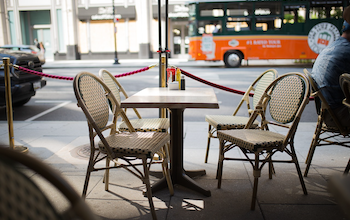
For centuries tipping has been an established part of dining out, but what is its origin? This article will dive into the origins and development of the tipping practice all around the world. Discover the fascinating history of tipping and enjoy a definitive guide to navigating the dos and don'ts of tipping in this comprehensive guide.
We'll start our exploration by finding out how tipping began, and then examine its traditional roots in different countries and cultures. Get an understanding of how tipping has adapted internationally and discover the various cultural differences between tipping etiquette and the associated cultural values. Information about the law and how tipping has changed in the past century also forms part of this article. Finally, discover how the attitudes around tipping have drastically changed since its inception and learn how to show your appreciation for great service.
Tipping Etiquette Throughout History
In many parts of Europe, tipping has a long and interesting history. In 18th century England, there was an entrenched culture of tipping among servants. Lower-class individuals, such as domestic staff, were expected to accept gratuities from their masters - essentially being paid extra for their services. This practice of tipping servants eventually spread to North America and extended beyond just those employed by wealthy households - to include hotel staff, livery drivers and more.
While tipping servers has become commonplace today, it was not the norm for much of history. The tipping culture in restaurants can be traced back to the early nineteenth century in North America. At this point in time, customers had the option of choosing to leave gratuities for servers and service staff. This option was not standardised and depending on the venue, it could range from being considered a necessary expense or an optional gesture. It wasn't until the mid-1800s that tipping became more accepted in restaurants, and by 1870, the practice was rampant in America. The spread of tipping in Europe came a bit later, in the early twentieth century.
Tipping taxi drivers is a common practice in many parts of the world, but it has not always been the norm. It is rumoured that the practice originated in London, where passengers would give taxi drivers a few extra coins in recognition of their assistance in getting the passenger's trunk better located and secured in the back of the cab. This practice eventually spread to the United States and other countries in the late 19th century. It wasn't until after World War II that tipping taxi drivers became the norm in many parts of Europe.
Tipping bartenders is another practice that is common across the world. Its roots, however, can be traced back to the United States in the 1930s. At this point in time, tipping bar tenders was not the norm, but some establishments had a “pool” system in place. In the pool system, patrons would pool a certain portion of their payment, and use it to reward the bar staff at the end of the month. It wasn't until after Prohibition ended in 1933 that tipping bartenders became a common practice.
Tipping tour guides is a relatively new practice, and has only become commonplace in the last few decades. In the past, tour guides had a primary role of providing information to visitors and providing an enjoyable opportunity for sightseeing. They did not depend on tips to make a living, as this was not a common practice. Today, however, the role of the tour guide has shifted as tips have become increasingly valued. It is now considered a necessary part of appreciating the services provided by tour guides.
Overall, it is clear that tipping etiquette has changed drastically over time. The practice of tipping has origins that date back to the 18th century in Europe, and has since spread across the world. Different types of tipping etiquette, from serval to bartenders, have different histories, but most developed over the 19th century in North America. Tipping tour guides is a relatively young practice, only becoming mainstream in the last few decades. It is clear that modern tipping etiquette has evolved over a much longer period of time than many of us realise.